The Emerald Shores of Ireland - Part 5
A trip journal by David Bowers
9/2/08-9/11/08
Part 5
Day 3: Thursday September 4, 2008
We awoke and started Day 3, glad that we were staying a second night here so we didn't have to worry about the luggage. We got dressed and headed down to the restaurant for breakfast. Breakfast would be served buffet style, and the line started with trays. At least someone has come to their senses, back in the United States they are trying to take trays out of dining halls. Okay, grab tray, silverware, then the bread display with rolls, croissants and different kinds of bread, complete with bread plates, then the glasses and the juice machine with orange and apple juices as well as water. The glasses were tiny, so I did the usual college dining hall strategy of taking two. Those items were along one side wall, then we started down the buffet. It started off with the jellies, and then the cold cereal. Instead of dispensers, the cold cereal was sitting out in various large bowls. On the other side of the bowls was the cold bar, which held the carafes of milk for the cereal (or for drinking), cream cheeses, butter as well as the fruit bar. Fruit salad, melons, grapefruit sections, and oddly enough prunes were on offer. Next up was the hot bar, it started out pretty standard with scrambled eggs, bacon that looked as if it was hardly cooked, and sausage links, then came the more interesting stuff, like breakfast pudding, available in both black and white varieties, fried tomatoes (which I skipped), porridge (which I took a bowl of) and of all things baked beans. Now I like baked beans as much as the next guy, but I couldn't get used to the idea of having them for breakfast. On the other side wall were the plain breads and toaster as well as the coffee and tea service with saucers available for the mugs.
Okay so I loaded up a tray full of food, and took it over to a table. On the table I found the sugar and cream. So let's see how the Irish breakfast tastes. The eggs were a bit runny but acceptable, just be careful with that pepper shaker, if you even look at it wrong you have a good pile of pepper on your food. The sausage was not the type of sausage we generally have with breakfast but it was pretty good. Which brings us to the puddings, according to Wiki, "White" breakfast pudding contains: pork meat and fat, suet, bread, and oatmeal formed into the shape of a large sausage, in other words similar to what we would call goetta, although Bob tells me in his opinion it tasted nothing like goetta. Black pudding is similar except it adds blood to it. I'm mostly glad I didn't find out what was in it until I got home as I took a liking to the different puddings. I left the beans and tomatoes alone, but I did try a bowl of porridge, which Wiki confirms my suspicions is what we call oatmeal. Moving on to the cold food, I liked the fruit salad and the melons, but two grapefruit sections were enough to convince me I had no real interest in that. I thought the orange juice tasted a bit watered down, but the coffee more than made up for it. They don't play around with their coffee. I was surprised that in a land that seems to serve potatoes with everything, they had no equivilant to our hash brows or home fries, in fact nothing really potato-ish at all for breakfast, also they didn't have the deli trays out for breakfast like Italy did.
Having finished breakfast we returned to our rooms, and grabbed our carry on bags. I knew we were coming back here, but I don't like to leave anything in the room I would be heart sick if it vanished. We had heard the night before that there would be a seat rotation scheme implemented, the idea is to give everybody a chance to be at the front and back of the bus. The idea sounded pretty simple, each day you rotated two rows clockwise, so if you were on one side of the bus you moved up two rows, the other side moves back two rows, hopping over the center aisle in the front or back as needed. We heard that we would rotate once each day, at the beginning of the day. I can report the seat rotation scheme didn't work out well on its first morning, and never really did get better. That isn't to say that no effort was put into it, in fact I'd say most people did try to abide by it, but it just didn't pan out.
We started our morning with another driving tour through Galway, where it was pointed out to us that several streets in the city center (their term for downtown) are pedestrian only at night, but are open during the day. We took a drive around Eyre Square, sometimes called "Kennedy Memorial Park", yes after JFK. Its an inner city park with a nice fountain flanked by a row of flags of the founding families, as well as the Browne Doorway which was once the doorway to the Browne family home before being moved to the park as a historical item. The Browne Doorway was partially concealed by construction walls at it is being rehabbed, but the walls are designed with an image of the doorway so you can get a hint of what it looks like.
From there we drove closer to but still not to Galway Cathedral before heading out of the city. We did get in one traffic jam caused by getting tuck in a narrow street and being blocked in by school busses dropping off their students at school. Yes, the image you may have gotten from watching the Harry Potter movies of students in dress clothes and matching ties to go to school is absolutely correct. Jerry mentioned that in their schools students are expected to learn both English and Gaelic. (It's interesting the tour books I have suggest I call it Irish and not Gaelic, but our guide, as well as the signage in Ireland refer to it as Gaelic). Jerry also pointed out that for most people once you get out of school, you never really need Gaelic again, so everybody becomes rather proficient at it in school, then you graduate and since you don't use it in your daily life you forget most of it until, of course, you have children of your own whom you are trying to help them get through school. Jerry also confirmed to us that, yes, Irish children are provided with free schooling, at the school of their choice, all the way through college. That part we kind of knew, but the part that blew most people's minds was when he said "school of choice" includes either a secular or religious based school, since we come from the land where we take "Separation of church and state" to mean no public dollars can be spent on parochial schools. One upside though is that since almost everybody goes to a parochial school, or a school setup by a private concern, that there are very few state run "public schools", just no need for them as the private sector has provided more than ample facilities, for which they get all their funding right from the government. Just past Galway Cathedral is the University. Once interesting fact about the University in Galway is that the official working language of the school is Gaelic, and Jerry quipped "And what do you do with an extensive knowledge of Gaelic?, Well since Gaelic is an official language of Ireland, all public documents must be published in both English and Irish translations, and furthermore anything the European Union releases to all of its member states, or to Ireland must be translated into Gaelic. As you can imagine with the amount of paper a government can produce, that can keep quite a lot of Gaelic scholars busy.
Jerry said that yes, as we may have noticed by now English is commonly spoken in Ireland, and is an official language, in fact it is the language spoken by the vast majority of the citizens. However, there is a small, but rather vocal minority who is always pushing to keep Gaelic official and preserve its use. They commonly state reasons such as national identity, national pride, patriotism, cultural identity, preserving history, etc as reasons they want to keep Gaelic alive, and there are cities and regions of Ireland that have bonded to become so fanatical about it, that they want to make Gaelic the exclusive language in their areas, referred to as Gaeltacht areas, but we'll talk more about that and the problems it presents later on in the trip.
Jerry mentioned we were about to have our first visit where he would hand us off to a local guide, and yes even though we all speak English to be mindful that the accent will be different. Stuff like they stress there R's more than we do so "three" comes out sounding like "tree", or "tu" is pronounced like "choo", so a tuba is pronounced chooba, which means a ballet dancer performs in a "choo-choo". We may hear somebody say "That's grand" which means "That's fine" , and that some people don't use "yes" or "no", so if you ask them a yes or no question like "Did you have lunch" they will respond by saying "I ate" or "I didn't eat" He also said they tend to let a response drift off to make it seem like they know more about something than they are letting on, like if you ask "Is that Blarney Castle?" They might respond "That would be…" and just let it hang there.
Now that we have had our language lesson, its time for our next stop, which in Connemara and the Connemara Marble company. Jerry said he had called them to make special arrangements to open early to accommodate our touring schedule. It seems they open at 10am, and Jerry asked "Can you open earlier?" and they responded "How about 5 till 10?" Anyway he talked them into 9am, so we pulled up at the marble works and went inside. We entered the company store and after everybody was gathered inside, we were ushered into the back room. At one end of the back rrom was a large area for people to gather and in one corner stands a little marble moutain and what looks like a drill press or other large tool. Our guide goes over to this mountain like area which forms its own stage like area. Our guide flips a switch and we learn he has a wireless microphone on, a rather neat idea. Our guide welcomes us and proceeds to talk a bit about Connemara Marble and how it is dug out of quarries located around the area and then fashioned into all sorts of items large (like interior walls and floors of buildings) and small (like trinkets and jewelry). He talks about how the various colors generally come from different quarries although there can be exceptions as he holds up a block of marble with both light and dark green. He shows up some samples of blocks of marble to show us the different colors, commenting on how they can work with thick blocks or wafer thin pieces as a well timed spotlight can shine right through such a small piece. He goes on to tell us about the uniqueness of marble to fossils that wind up in the pieces, some of which stay there, and some of which fall out leaving little holes. Also as a samples of their work he pointed out to look at the floors of Galway Cathedral and then showed around a necklace which had beads of all the various marble colors. He did tell us that marble, while quite abundant at one time, is not a limitless resource, and that some colors like the dark green are about to run out. Dark green is now so scarce they will no longer use it in large building projects, only trinkets and jewelry.
After the presentation which covered more the history and information about the product and less on how it's made we are led through the workshop where the workers hare just starting to arrive for the day and then back out into the store by means of another door. Some time is given here for shopping, and Bob and I each buy a small celtic cross statue, with me choosing the dark green. Those went for €20 each and we were given a brochure about the company. Back on the bus we noted another group unloading and another group just pulling up. I wonder if the early open thing was just the framework for some light morning humour.
From the marble company we take a drive through the Connemara countryside and are rewarded with breathtaking views, especially went we weent past some lakes and the bright sun in the sky casted the most beautiful reflections off the lakes, creating mirror images of the terrain above water. You just couldn't ask for a more picturesque view.
Our next touring stop was Kylemore Abbey, which is an active Benedictine Abbey built on the site of the former Kylemore Castle. Remember what I said about castle owners wanting a natural attraction to draw influencial friends to their castle, well Kylemore Castle looked as if it were built right in to the hillside and was fronted by a nice size lake, yet another picture perfect spot. We pull into the bus parking area which is on the opposite side of the lake from the castle itself. Jerry points out things to see, such as the castle itself which is open for self guided tours through about 5 rooms, then further along the path is the gothic style church, and then you end up at the Mausoleum to the original family of Kylemore Castle. He also mentioned there is a formal Victorian garden we can go see, but it does involve taking a bus ride to get to. It was also decided that we would use this as our lunch stop and that there is an extensive visitors center in the white building on the other side of the bridge that has what Jerry said was a buffet style restaurant. A return time of 2 hours was set, and as we exited the bus Jerry and Fr. Barry stood at the bus doors passing out admission tickets to the site.
In order to get anywhere, you had to cross a bridge from the bus parking area over to the visitors center. So we did that as a group and then people split up based on their priorities so we took the walkway further alongside the lake around to the castle. Just before he got to the first attraction we came to another white building which serves as the gatehouse. We noted exit turnstiles in the fence alongside the building, and a sign directing people inside the building to enter. The building was like a reception area with murals and signs about the Abbey and other displays. Along one wall was the ticket sales counter and some gift items. I noted a line at the admission gate nearest the counter and two entrance turnstiles that weren't getting any use. I had noted the tickets had a bar code on them, and instructions to scan this barcode at the ticket barrier. I walk up to a turnstile, and put my ticket under the barcode scanner, the scanner emits a red bar of light like it is reading the barcode, but I get neither confirmation that the ticket has been accepted nor notice the ticket has been rejected. After a few tries to scan I walk forward into a still locked turnstile. The ticket taker for the manned admission gate indicates that we should come to him with a tone that all but says "I can't remember the last time those things worked" We go to him and trade in our tickets for park guides and then exit the door onto the grounds to continue our way around the lake.
At this point one could go left to get to the bus stop to ride the bus to the gardens, or to the right to continue around to the buildings. There was a path straight ahead towards the still active and operating school which was clearly signposted as being off limits to tours. Not just "Private area" but "Strictly Private Area". We continued around the lake to the castle and headed in the front door. From the front door we proceeded to take the tourist trail through the castle, the hall to the left was marked off limits, leaving the hall to the right. Passing through the entryway which was not very remarkable except maybe for its architecture. The stairs were roped off, so the path goes straight through to the next room. The next room was the library or parlor type room and was decorated with period details such as a chess set, and a very early model record player. One wall had a high cabinet, which contained a bookcase with shelves so high it had a ladder. Taking a turn to the left we entered a room that was being used as a museum of sorts with various religious artifacts such as a tabernacle and the display panels that would have been behind an altar were on display as well as vestments and other religious items. Continuing straight through this room it was up a flight of stairs to the formal dining room, with the table set for a very formal banquet with the fancy silverware, china and stemware. To be clear you weren't allowed to walk about the parlor or dining room, just around the edges. From the dining room, it was back down the stairs in a hallway that had some signage about the castle and that led into a sitting room. The sitting room had a large fireplace at one end and was quite tall as it had a balcony ringing it from the floor above. In the center of the room is what I call a round chair, it was like a sofa for four people, in individual sections with armrests, but it was round. This room looked just like a formal sitting room, except maybe for the statue of Mary in one corner with a rack of votive candles underneath. The sitting room leads back into the entry hall and we exited the house the way we came.
Castle Tour Photos:

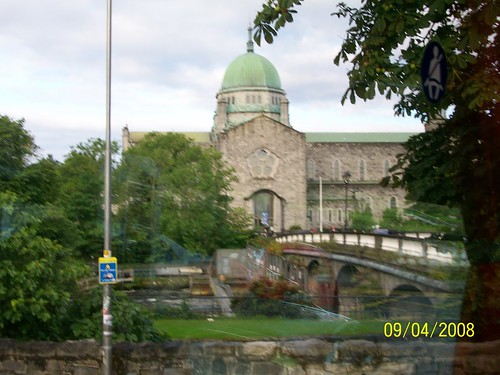



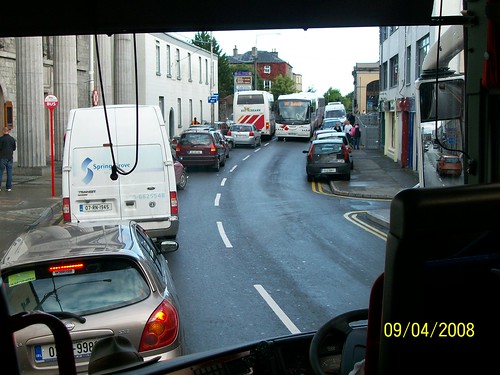

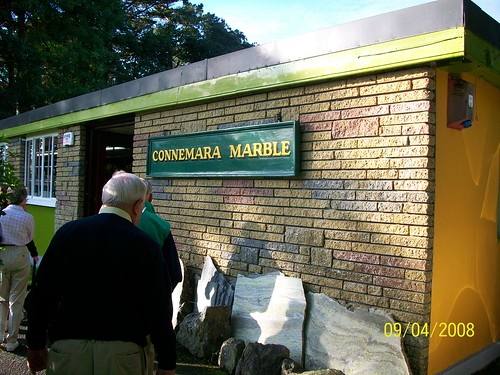
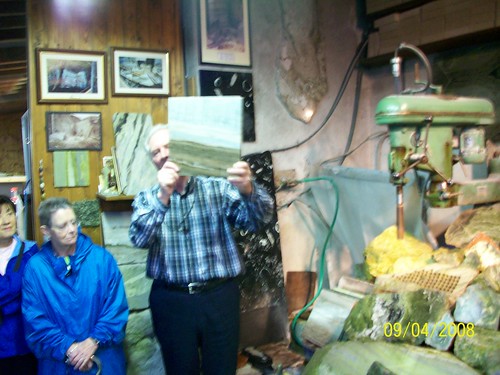

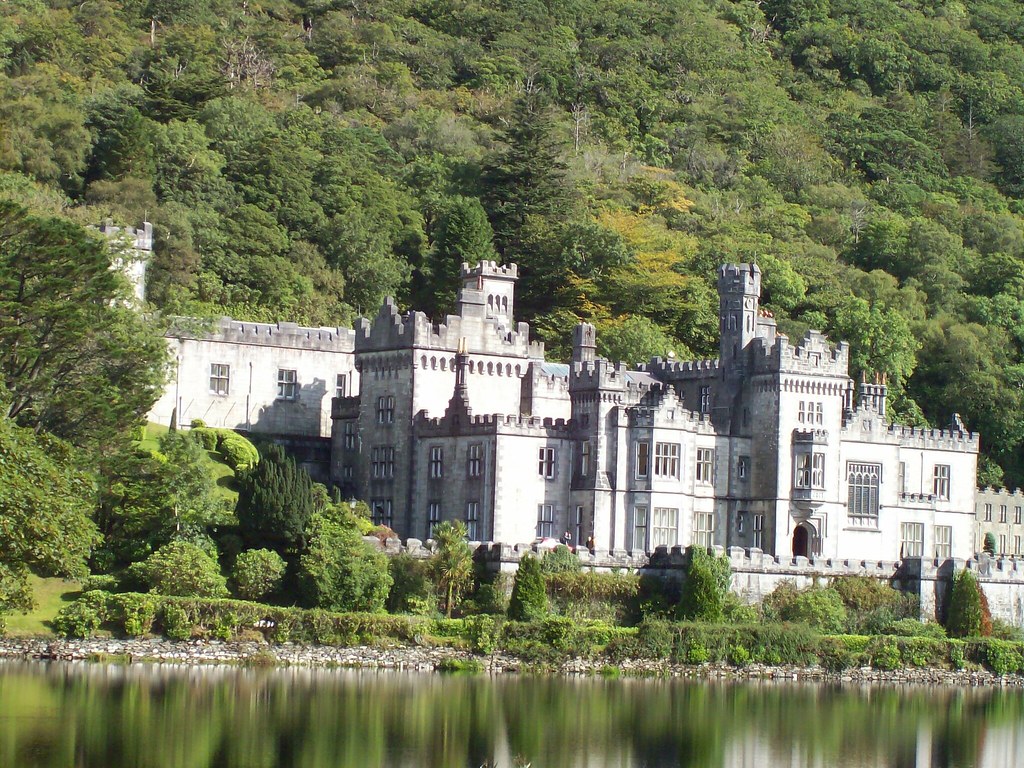


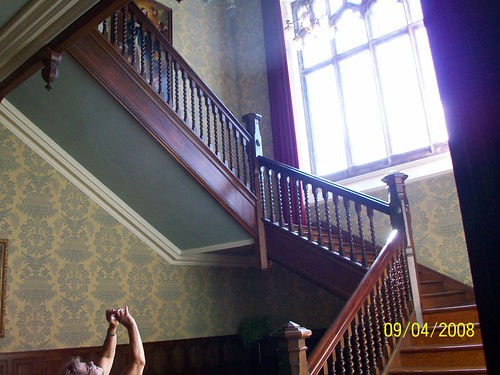
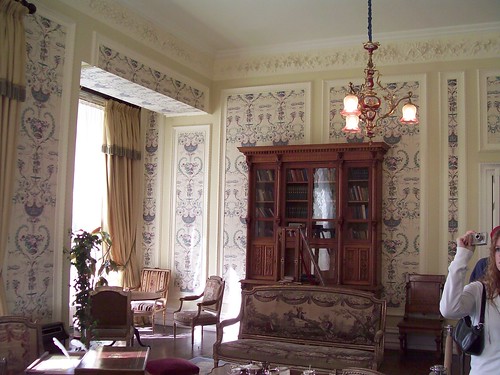
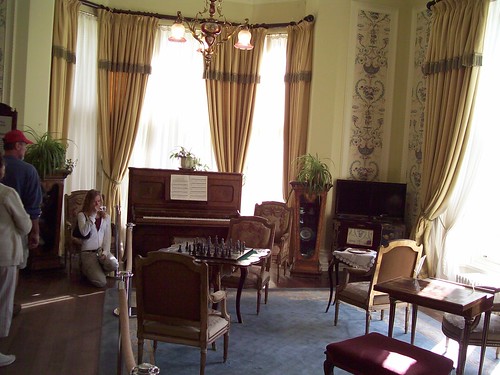


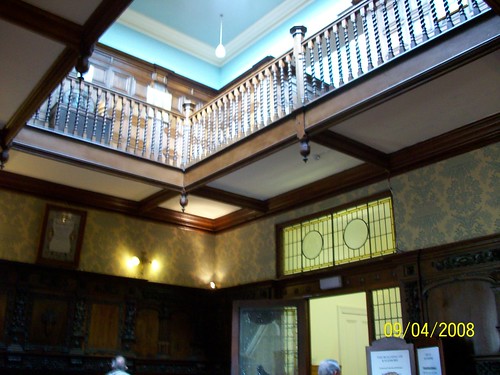


1 Comments:
I find extordnary your comments in your trip journal,on the day 3 breakfast. What you were offered was'Irish Breakfast'what else would you get in Ireland,Italian?
I suggest when you leave the USA for your next trip abroad, check up on the food you are likely to get in the countries you intend to visit.... before you leave!to avoid disappointment.
Post a Comment
<< Home